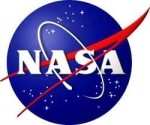Wed, Nov 10, 2010
Goal Is To Evaluate Potential New Systems, Concepts, And
Technologies
 NASA has selected 13 companies for negotiations leading to
potential contract awards to conduct systems analysis and trade
studies for evaluating heavy-lift launch vehicle system concepts,
propulsion technologies, and affordability.
NASA has selected 13 companies for negotiations leading to
potential contract awards to conduct systems analysis and trade
studies for evaluating heavy-lift launch vehicle system concepts,
propulsion technologies, and affordability.
The awards total approximately $7.5 million with a maximum
individual contract award of $625,000. Each company will provide a
final report to help lay the groundwork for the transportation
system that could launch humans to multiple destinations, including
asteroids, Lagrange points, the moon and Mars.
The selected companies are:
- Aerojet General Corp., Rancho Cordova, CA.
- Analytical Mechanics Associates, Huntsville, AL.
- Andrews Space, Tukwila, WA.
- Alliant Techsystems, Huntsville, AL.
- The Boeing Co., Huntsville, AL.
- Lockheed Martin Corp., Huntsville, AL.
- Northrop Grumman Systems Corp., Huntsville, AL.
- Orbital Sciences Corp., Chandler, AZ.
- Pratt & Whitney Rocketdyne, Canoga Park, CA.
- Science Applications International Corp., Huntsville, AL.
- Space Exploration Technologies Corp., Hawthorne, CA.
- United Launch Alliance, Centennial, CO.
- United Space Alliance, Huntsville, AL.
"These trade studies will provide a look at innovative launch
vehicle concepts, propulsion technologies, and processes that
should make human exploration missions more affordable," said Doug
Cooke, associate administrator of NASA's Exploration Systems
Mission Directorate at the agency's Headquarters in Washington. "If
we are to travel beyond low-Earth orbit, industry's collaboration
is essential to reduce the cost associated with our future
exploration goals and approaches and make the heavy-lift vehicle
affordable to build and fly."
The studies will include heritage systems from shuttle and Ares,
as well as alternative architectures and identify propulsion
technology gaps including main propulsion elements, propellant
tanks and rocket health management systems. The reports will
include assessments of various heavy-lift launch vehicle and
in-space vehicle that use different propulsion combinations. The
companies will examine how these combinations can be employed to
meet multiple mission objectives.
NASA will use the recommendations to evaluate heavy-lift launch
vehicle concepts and propulsion technologies for affordability that
will be required to enable robust and sustainable future
exploration missions.
More News
“While legendary World War II aircraft such as the Corsair and P-51 Mustang still were widely flown at the start of the Korean War in 1950, a new age of jets rapidly came to >[...]
Decision Altitude (DA) A specified altitude (mean sea level (MSL)) on an instrument approach procedure (ILS, GLS, vertically guided RNAV) at which the pilot must decide whether to >[...]
Aero Linx: National Aviation Safety Foundation (NASF) The National Aviation Safety Foundation is a support group whose objective is to enhance aviation safety through educational p>[...]
Also: Cal Poly Aviation Club, $$un Country, Arkansas Aviation Academy, Teamsters Local 2118 In response to two recent general aviation accidents that made national headlines, more >[...]
“The FAA is tasked with ensuring our skies are safe, and they do a great job at it, but there is something about the system that is holding up the medical process. Obviously,>[...]
 Aero-News: Quote of the Day (04.28.25)
Aero-News: Quote of the Day (04.28.25) ANN's Daily Aero-Term (04.28.25): Decision Altitude (DA)
ANN's Daily Aero-Term (04.28.25): Decision Altitude (DA) ANN's Daily Aero-Linx (04.28.25)
ANN's Daily Aero-Linx (04.28.25) Airborne-Flight Training 04.24.25: GA Refocused, Seminole/Epic, WestJet v TFWP
Airborne-Flight Training 04.24.25: GA Refocused, Seminole/Epic, WestJet v TFWP Aero-News: Quote of the Day (04.29.25)
Aero-News: Quote of the Day (04.29.25)



